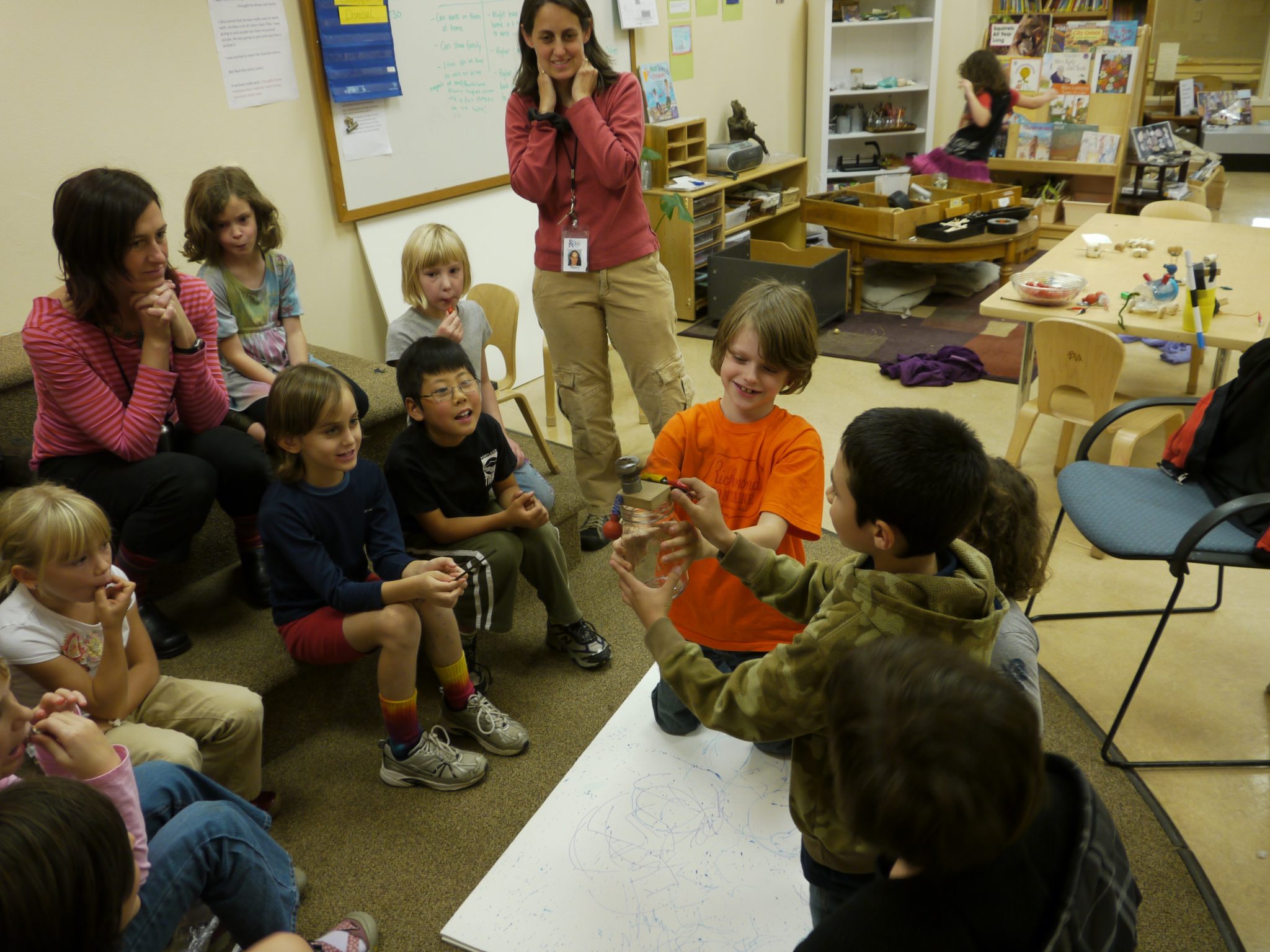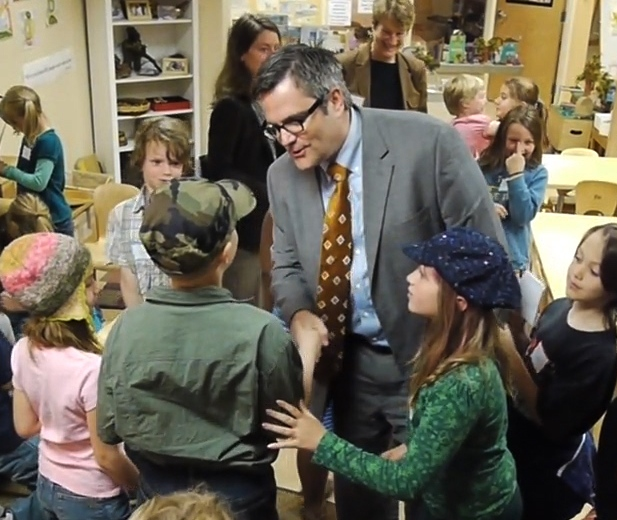Legislative support for Opal School

Opal School was one of the first charter schools established in Oregon. The Oregon Charter Schools Act identified nine goals for charter schools:
(1) Increase student learning and achievement;
(2) Increase choices of learning opportunities for students;
(3) Better meet individual student academic needs and interests;
(4) Build stronger working relationships among educators, parents and other community members;
(5) Encourage the use of different and innovative learning methods;
(6) Provide opportunities in small learning environments for flexibility and innovation, which may be applied, if proven effective, to other public schools;
(7) Create new professional opportunities for teachers;
(8) Establish additional forms of accountability for schools; and
(9) Create innovative measurement tools.

Entering into this policy issue means wading into contested terrain. Charter schools nationally represent many – sometimes conflicting – intentions. Some – like Opal School – exist as laboratories through which to explore innovative approaches to learning intended to improve opportunities for all children and the adults who work with them (and, in turn, our larger communities). Other charter schools are formed to demonstrate alternative business models. That’s not Opal School: Opal School is not interested in developing franchises or new systems of administration; it does not intend to position itself against public school districts.
Opal School’s mission has led us to work closely with district administrators, schools, and public school teachers who come to Opal School to re-awaken their imagination regarding what is possible in working with children. As a Portland Public School teacher recently told us, Opal School provides an essential landscape for understanding how schools can pursue vigor over rigor.
Opal School teachers lead the charge in inspiring these new opportunities for children, families, and educators. What is likely invisible to Opal School parents and visitors is that Opal School teachers are paid a small fraction of the salaries received by other teachers in the region. Some teachers who have left Opal School report that their take-home paycheck nearly doubled at their next school. That’s a tremendous financial burden for Opal School teachers to carry over time – even as Opal School teachers cherish the many personal and professional rewards of working in a highly innovative and collaborative environment that strives to create a more beautiful manifestation of schooling and that has made profound contributions to learning environments around the world.
In order to improve teacher salaries, Opal School needs increased stable funding. The school has benefitted from public and private grants over its history, but those awards do not provide the regularity necessary to raise salaries. In order to provide Opal School teachers a wage that comes closer to fairly compensating their efforts, we need better per pupil state reimbursement. SB 819 does this by narrowing the funding gap between per pupil funding received by charter schools and that provided to district schools.
I imagine that this post provokes a range of responses, questions, and concerns. Some of you may have alternative ideas regarding how Opal School might better its finances. I hope that you’ll share those ideas. I also hope that you’ll reach out to the members of the Senate’s Education Committee and other state senators to explain why this issue is so important to Opal School – and why Opal School is so important to your communities.
